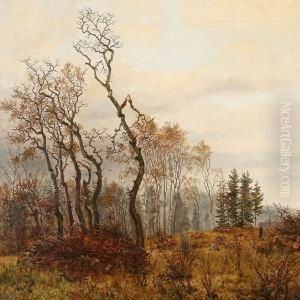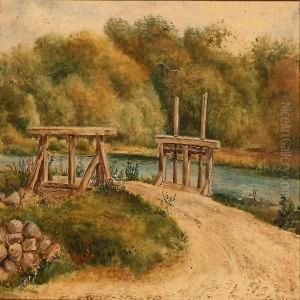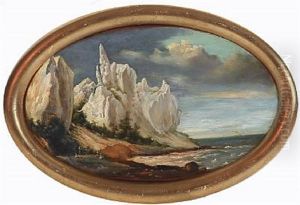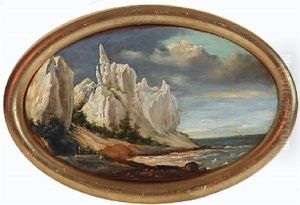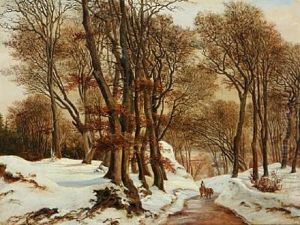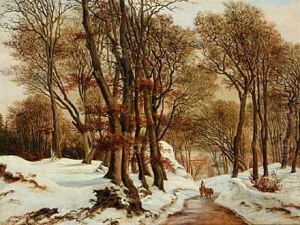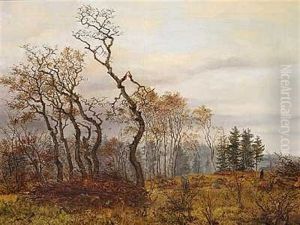Eleonore Tscherning Paintings
Eleonore Tscherning, born Maria Eleonore Tscherning on May 27, 1817, in Copenhagen, was a notable Danish painter and a pioneer among female artists in Denmark during the 19th century. She was born into an artistically inclined family; her father, Johan Frederik Tscherning, was a military officer and amateur artist, and her mother was Johanne Henriette Tscherning. Her brother, Frederik Tscherning, also pursued a military career but had an interest in art.
Eleonore was initially trained by her father, which was common for women of her era, as formal art education was not readily available to them. She further developed her skills by studying with various Danish painters. In 1840, she became one of the first women to be admitted to the Royal Danish Academy of Fine Arts, an important step for women in the Danish art world. However, even at the Academy, she and her female peers faced limitations in their education, such as being barred from attending certain classes that were open to their male counterparts.
Tscherning is primarily remembered for her landscape paintings and for her depictions of interiors and genre scenes. Her works often exhibit a keen attention to detail and a sensitivity to light and atmosphere, characteristics that align her with the Danish Golden Age, a period of exceptional creative production in Denmark. While she did not achieve the same level of fame as some of her male contemporaries, her paintings were well-received, and she exhibited regularly at Charlottenborg, the official exhibition hall of the Royal Danish Academy of Art, from 1849 to 1886.
Apart from her painting career, Eleonore Tscherning played a significant role in advocating for the rights and recognition of female artists in Denmark. She was known for her efforts to support and promote women in the arts, including helping to organize art exhibitions featuring women's work.
Eleonore Tscherning never married and spent much of her life dedicated to her craft. She passed away on April 22, 1890, in Copenhagen. Although her work was somewhat overshadowed by her more famous contemporaries, her contributions to Danish art, particularly as a trailblazer for women artists, remain significant. Her legacy is reflected in the increased opportunities and recognition for female artists in Denmark that followed her pioneering efforts.
